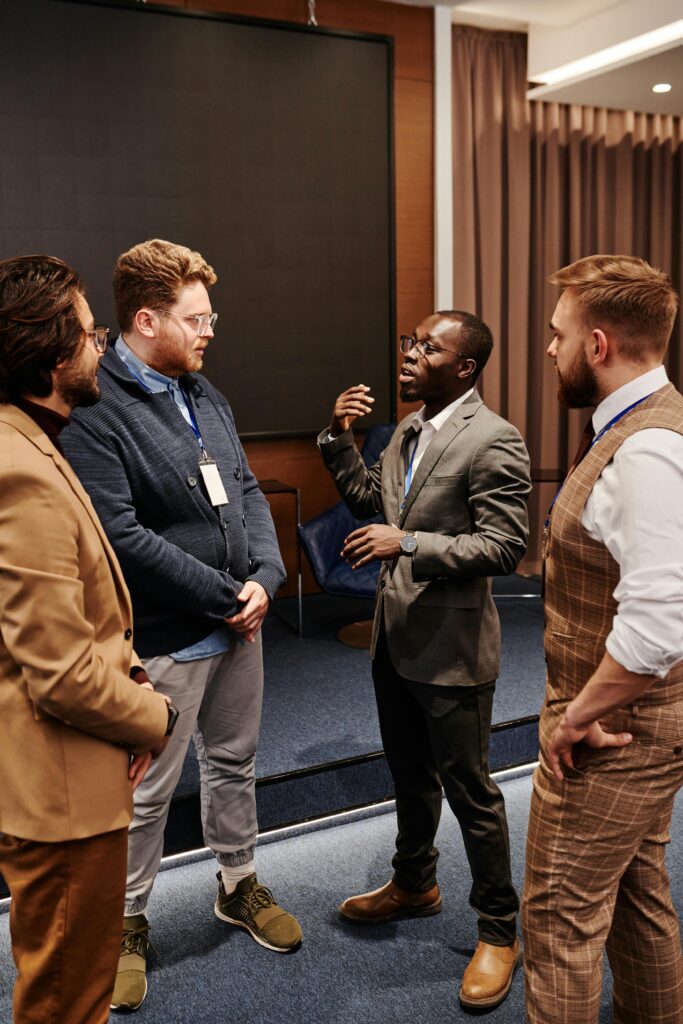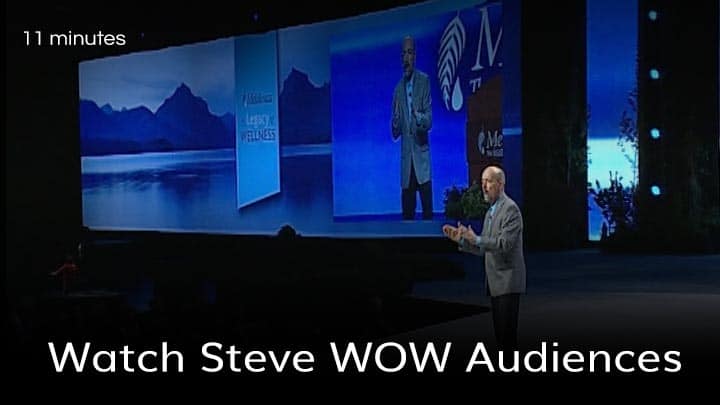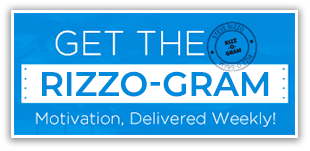Blog
Relationship Synergy in Business
Synergy in Business Relationships: How Corporate Leaders Can Transform Team Dynamics and Drive Unprecedented Success
By Steve Rizzo, Hall of Fame Keynote Speaker and Mindset Adjuster
In today’s hyper-competitive landscape, the difference between companies that merely survive and those that thrive lies in one critical factor: relationship synergy in business. Another way to categorize it would be workplace collaboration strategies. As someone who has spent decades helping Fortune 500 companies shift their mindsets from failure to success, I’ve witnessed firsthand how powerful relationships can transform organizational culture, boost productivity, and create unstoppable momentum toward achieving business goals.
What is Synergy in Relationships?
Synergy in relationships occurs when two or more individuals combine their strengths, perspectives, and efforts to create results that exceed what any single person could achieve alone. In the corporate world, this translates to teams that don’t just work together—they elevate each other, creating a multiplication effect that drives extraordinary outcomes.
The mathematical equation is simple: 1 + 1 = 3 (or more!). But the execution? That’s where most organizations fall short. They focus on individual performance metrics, competitive internal structures, and siloed departments, missing the tremendous opportunity that lies in fostering genuine relationship synergy across all levels of their organization.

Relationship Synergy in Business: The Business Case for Relationship Synergy
Enhanced Innovation and Problem-Solving
When team members operate with true synergy, they create a psychological safety net that encourages bold thinking and creative risk-taking. Collaborative relationships in the workplace lead to breakthrough innovations because diverse perspectives collide in productive ways. Companies like Google and Apple have built their entire innovation strategies around this principle, creating environments where relationship synergy drives their competitive advantage.
Increased Employee Engagement and Retention
According to recent workplace studies, employees who feel connected to their colleagues and experience positive workplace relationships are 7x more likely to be engaged in their work. This engagement translates directly to bottom-line results: engaged teams show 23% higher profitability, 18% higher productivity, and 12% better customer metrics.
Accelerated Decision-Making
In synergistic relationships, trust levels are high, communication is efficient, and decision-making processes accelerate dramatically. Instead of lengthy approval chains and bureaucratic delays, teams with strong relationship synergy can pivot quickly, respond to market changes, and capitalize on opportunities before competitors even recognize them.
Relationship Synergy in Business: The Mindset Shift: From Competition to Collaboration
Here’s where mindset becomes everything: Most professionals have been conditioned to view workplace relationships through a competitive lens. They hoard information, protect their territory, and see colleagues as potential threats to their advancement. This scarcity mindset is the enemy of synergy.
The synergistic mindset operates from abundance. It recognizes that lifting others up creates more opportunities for everyone. Sharing knowledge multiplies rather than diminishes personal value. The synergistic mindset embraces the reality that in our interconnected business world, individual success is increasingly dependent on collective achievement.
Shifting from “Me” to “We”
The most successful corporate leaders I’ve worked with—from Fortune 100 CEOs to department managers—have mastered this fundamental shift. They’ve moved from asking “How can I succeed?” to “How can we succeed together?” This isn’t just feel-good philosophy; it’s strategic business thinking that drives measurable results.
Building Blocks of Relationship Synergy
1. Authentic Communication
Effective workplace communication forms the foundation of all synergistic relationships. This goes beyond status updates and project reports. It involves:
- Active listening that seeks to understand before being understood
- Transparent dialogue that addresses challenges openly and constructively
- Empathetic responses that acknowledge different perspectives and experiences
- Consistent follow-through that builds trust and reliability
2. Complementary Strengths Recognition
Every individual brings unique strengths to the workplace. Successful team dynamics emerge when leaders and team members actively identify, appreciate, and leverage these diverse capabilities. Instead of trying to make everyone the same, synergistic relationships celebrate differences and create roles that allow each person to operate in their zone of genius.
3. Shared Vision and Values
Without common ground, even the most well-intentioned relationships lack direction. Organizational alignment happens when teams unite around shared objectives and values. This doesn’t mean everyone thinks the same way—it means everyone is rowing in the same direction while contributing their unique perspectives and skills.
4. Mutual Accountability
In synergistic relationships, accountability isn’t punitive—it’s supportive. Team members hold each other to high standards because they’re invested in collective success. This creates a culture where performance improvement happens naturally through peer support and encouragement rather than top-down management pressure.
Relationship Synergy in Business: Practical Strategies for Developing Relationship Synergy
Create Cross-Functional Collaboration Opportunities
Break down silos by intentionally creating projects that require different departments to work together. When marketing collaborates with engineering, or when finance partners with customer service, new insights emerge and interdepartmental relationships strengthen.
Implement Regular Relationship Check-ins
Just as you review financial performance and project milestones, schedule regular conversations focused specifically on relationship dynamics. Ask questions like:
- How well are we communicating?
- What can we do to better support each other?
- Where do we see opportunities for stronger collaboration?
Celebrate Collective Wins
Shift recognition systems to highlight team achievements alongside individual accomplishments. When you publicly celebrate how different team members contributed to a shared success, you reinforce the value of cooperative workplace relationships.
Invest in Relationship-Building Activities
Team-building doesn’t have to involve trust falls and rope courses. Simple activities like shared meals, collaborative problem-solving sessions, or even informal coffee chats can strengthen the personal connections that fuel professional synergy.
Relationship Synergy in Business: Overcoming Common Obstacles to Relationship Synergy
The Trust Deficit
Many workplace relationships suffer from low trust levels, often due to past disappointments, competitive cultures, or lack of psychological safety. Building trust requires consistent, small actions over time. Start with keeping commitments, sharing credit generously, and addressing conflicts directly and respectfully.
Communication Breakdowns
Poor communication kills synergy faster than almost any other factor. Establish clear communication protocols, encourage questions, and create multiple channels for information sharing. Remember: over-communication is rarely the problem—under-communication almost always is.
Ego and Territory Issues
Individual egos can be the biggest barrier to relationship synergy. Address this by focusing conversations on outcomes rather than credit, creating shared ownership of projects, and modeling collaborative behavior from leadership levels.
The ROI of Relationship Synergy
Let’s talk numbers, because in the corporate world, results matter. Organizations that successfully implement relationship synergy strategies see:
- 25-40% improvement in team productivity
- 30% reduction in employee turnover
- 50% faster project completion times
- 35% increase in innovation metrics
- 20% improvement in customer satisfaction scores
These aren’t just feel-good statistics—they represent real business value that impacts shareholder returns, market position, and long-term sustainability.
Relationship Synergy in Business: Leadership’s Role in Fostering Synergy
As leaders, your behavior sets the tone for relationship dynamics throughout your organization. Here’s how to model synergistic leadership:
Demonstrate Vulnerability
Share your own challenges and uncertainties. When leaders are authentic about their limitations, it creates space for others to do the same, leading to more honest and collaborative relationships.
Practice Generous Attribution
When successes occur, be quick to share credit and specific in your praise. When challenges arise, take responsibility publicly and address issues privately. This builds trust and encourages risk-taking.
Facilitate Connections
Actively look for opportunities to connect team members with complementary skills or shared interests. Sometimes the most powerful synergies emerge from relationships you help initiate.
Measuring Relationship Synergy
What gets measured gets managed. Track the health of workplace relationships through:
- Employee Net Promoter Scores focused on team collaboration
- Cross-functional project success rates
- Internal referral and collaboration metrics
- 360-degree feedback specifically addressing relationship skills
- Team performance indicators that require collaborative effort
The Future of Work is Synergistic
As artificial intelligence and automation handle more routine tasks, human skills like relationship building, emotional intelligence, and collaborative problem-solving become increasingly valuable. Organizations that invest in relationship synergy today are positioning themselves for sustained success in tomorrow’s workplace.
The companies I work with that have embraced this philosophy don’t just outperform their competitors—they create work environments where people actually want to be, where Monday mornings feel like opportunities rather than obligations, and where individual growth and collective success happen simultaneously.
Relationship Synergy in Business: Your Next Steps
Building relationship synergy doesn’t happen overnight, but it starts with a single decision: the decision to shift your mindset from scarcity to abundance, from competition to collaboration, from “me” to “we.”
Start small. Choose one relationship in your workplace that could benefit from more synergy. Apply the principles we’ve discussed. Pay attention to the results. Then expand your efforts gradually until synergistic thinking becomes part of your organizational DNA.
Remember, mindset is everything. When you shift your mindset about workplace relationships from transactional interactions to synergistic partnerships, you don’t just change how you work—you change what’s possible in your career, your team, and your entire organization.
The choice is yours: Will you continue operating in isolation, or will you unlock the exponential power of relationship synergy? Your future success—and the success of everyone around you—depends on your answer.
Steve Rizzo is a Hall of Fame keynote speaker and bestselling author who helps organizations shift their mindsets from failure to success. Known as “The Mindset Adjuster,” Steve has worked with Fortune 500 companies including American Express, Marriott Hotels, and the CIA, helping leaders and teams unlock their potential through positive mindset shifts and collaborative excellence. Learn more at www.steverizzo.com.

